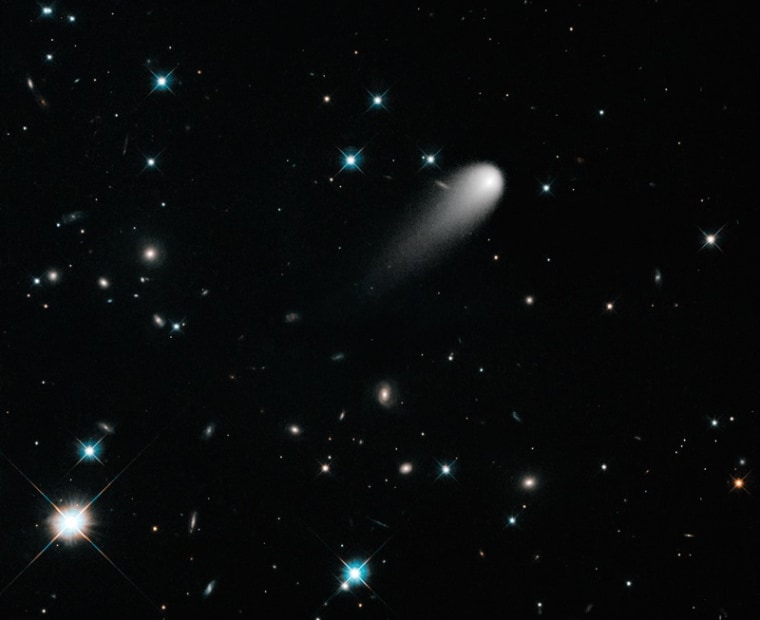Comet ISON, the fuzzy snowball that skywatchers hope will become the "comet of the century" in November, shines in a colorful setting provided by the Hubble Space Telescope and its science team.
The actual comet is out of view until next month, due to its current position in relation to the sun. However, the Hubble picture shows ISON as it looked on April 30, against a background of stars and galaxies. This image is an exclusive from the Hubble team's ISON Blog, which will deliver images and lore about the comet as its approaches the sun.
ISON was discovered last September by astronomers using the International Scientific Optical Network's 16-inch (0.4-meter) Santel reflecting telescope in Russia. It's expected to come within 685,000 miles (1.1 million kilometers) of the sun in late November. If ISON survives that encounter, it could brighten into a comet more brilliant than 2011's Comet Lovejoy. And unlike Lovejoy, it would be visible in the Northern Hemisphere. That's why there's been such a hubbub over just how bright ISON could get.
Hubble's experts will add to the hubbub on Wednesday when they present a Google+ Hangout about ISON at 4 p.m. ET. The host for the event is Tony Darnell, an astronomer at the Space Telescope Science Institute. Fellow astronomers Alberto Conti and Scott Lewis will join Darnell to talk about comets in general and ISON in particular. Max Mutchler, Bonnie Meinke and Jian-Yang Li will discuss what Hubble is expected to see, while Zolt Levay will focus on the space telescope's ISON imagery.
The world's most loved space telescope, plus the comet of the century? That sounds like a match made in the heavens.
More about Comet ISON:
- Movie trailer previews comet's fireworks
- Hubble catches early glimpse of ISON
- NBC News archive on Comet ISON
Alan Boyle is NBCNews.com's science editor. Connect with the Cosmic Log community by "liking" the NBC News Science Facebook page, following @b0yle on Twitter and adding +Alan Boyle to your Google+ circles. To keep up with NBCNews.com's stories about science and space, sign up for the Tech & Science newsletter, delivered to your email in-box every weekday. You can also check out "The Case for Pluto," my book about the controversial dwarf planet and the search for new worlds.
